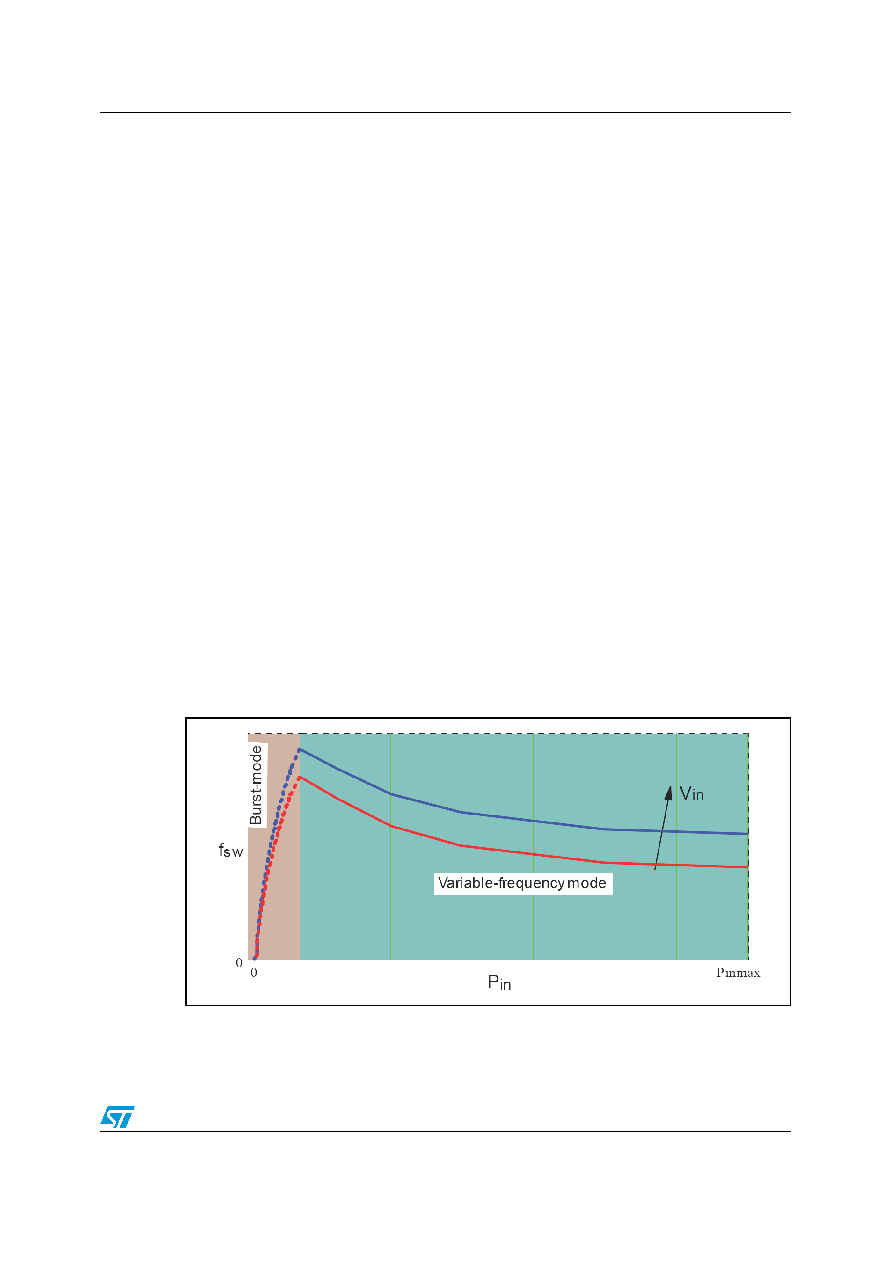- 您現(xiàn)在的位置:買賣IC網(wǎng) > PDF目錄43900 > L6599N (STMICROELECTRONICS) 0.8 A SWITCHING CONTROLLER, 500 kHz SWITCHING FREQ-MAX, PDIP16 PDF資料下載
參數(shù)資料
| 型號: | L6599N |
| 廠商: | STMICROELECTRONICS |
| 元件分類: | 穩(wěn)壓器 |
| 英文描述: | 0.8 A SWITCHING CONTROLLER, 500 kHz SWITCHING FREQ-MAX, PDIP16 |
| 封裝: | LEAD FREE, PLASTIC, DIP-16 |
| 文件頁數(shù): | 7/36頁 |
| 文件大小: | 636K |
| 代理商: | L6599N |
第1頁第2頁第3頁第4頁第5頁第6頁當(dāng)前第7頁第8頁第9頁第10頁第11頁第12頁第13頁第14頁第15頁第16頁第17頁第18頁第19頁第20頁第21頁第22頁第23頁第24頁第25頁第26頁第27頁第28頁第29頁第30頁第31頁第32頁第33頁第34頁第35頁第36頁

L6599
Application information
15/36
7
Application information
The L6599 is an advanced double-ended controller specific for resonant half-bridge
topology. In these converters the switches (MOSFETs) of the half-bridge leg are alternately
switched on and OFF (180° out-of-phase) for exactly the same time. This is commonly
referred to as operation at "50 % duty cycle", although the real duty cycle, that is the ratio of
the ON-time of either switch to the switching period, is actually less than 50 %. The reason
is that there is an internally fixed dead-time TD, inserted between the turn-OFF of either
MOSFET and the turn-ON of the other one, where both MOSFETs are OFF. This dead- time
is essential in order for the converter to work correctly: it will ensure soft-switching and
enable high-frequency operation with high efficiency and low EMI emissions.
To perform converter's output voltage regulation the device is able to operate in different
modes (Figure 21), depending on the load conditions:
1.
Variable frequency at heavy and medium/light load. A relaxation oscillator (see
"Oscillator" section for more details) generates a symmetrical triangular waveform,
which MOSFETs' switching is locked to. The frequency of this waveform is related to a
current that will be modulated by the feedback circuitry. As a result, the tank circuit
driven by the half-bridge will be stimulated at a frequency dictated by the feedback loop
to keep the output voltage regulated, thus exploiting its frequency-dependent transfer
characteristics.
2.
Burst-mode control with no or very light load. When the load falls below a value, the
converter will enter a controlled intermittent operation, where a series of a few
switching cycles at a nearly fixed frequency are spaced out by long idle periods where
both MOSFETs are in OFF-state. A further load decrease will be translated into longer
idle periods and then in a reduction of the average switching frequency. When the
converter is completely unloaded, the average switching frequency can go down even
to few hundred Hz, thus minimizing magnetizing current losses as well as all frequency-
related losses and making it easier to comply with energy saving recommendations.
Figure 21. Multi-mode operation
相關(guān)PDF資料 |
PDF描述 |
|---|---|
| L6599TR | 0.8 A SWITCHING CONTROLLER, 500 kHz SWITCHING FREQ-MAX, PDSO16 |
| L6610D | 6-CHANNEL POWER SUPPLY SUPPORT CKT, PDSO24 |
| L6610N | 6-CHANNEL POWER SUPPLY SUPPORT CKT, PDIP24 |
| L6611DTRT | POWER SUPPLY SUPPORT CKT, PDSO20 |
| L6611D | 5-CHANNEL POWER SUPPLY SUPPORT CKT, PDSO20 |
相關(guān)代理商/技術(shù)參數(shù) |
參數(shù)描述 |
|---|---|
| L6599NR | 功能描述:電壓模式 PWM 控制器 HV resonant CNTRL RoHS:否 制造商:Texas Instruments 輸出端數(shù)量:1 拓?fù)浣Y(jié)構(gòu):Buck 輸出電壓:34 V 輸出電流: 開關(guān)頻率: 工作電源電壓:4.5 V to 5.5 V 電源電流:600 uA 最大工作溫度:+ 125 C 最小工作溫度:- 40 C 封裝 / 箱體:WSON-8 封裝:Reel |
| L6599TR | 制造商:STMICROELECTRONICS 制造商全稱:STMicroelectronics 功能描述:High-voltage resonant controller |
| L65B | 制造商:Electro-Mech 功能描述: |
| L65B3C881-00000-000 | 制造商:Carling Technologies 功能描述:L-SERIES ROCKER SWITCH - Bulk |
| L65D1CNN1-00000-000 | 制造商:Carling Technologies 功能描述:L-SERIES ROCKER SWITCH - Bulk |
發(fā)布緊急采購,3分鐘左右您將得到回復(fù)。